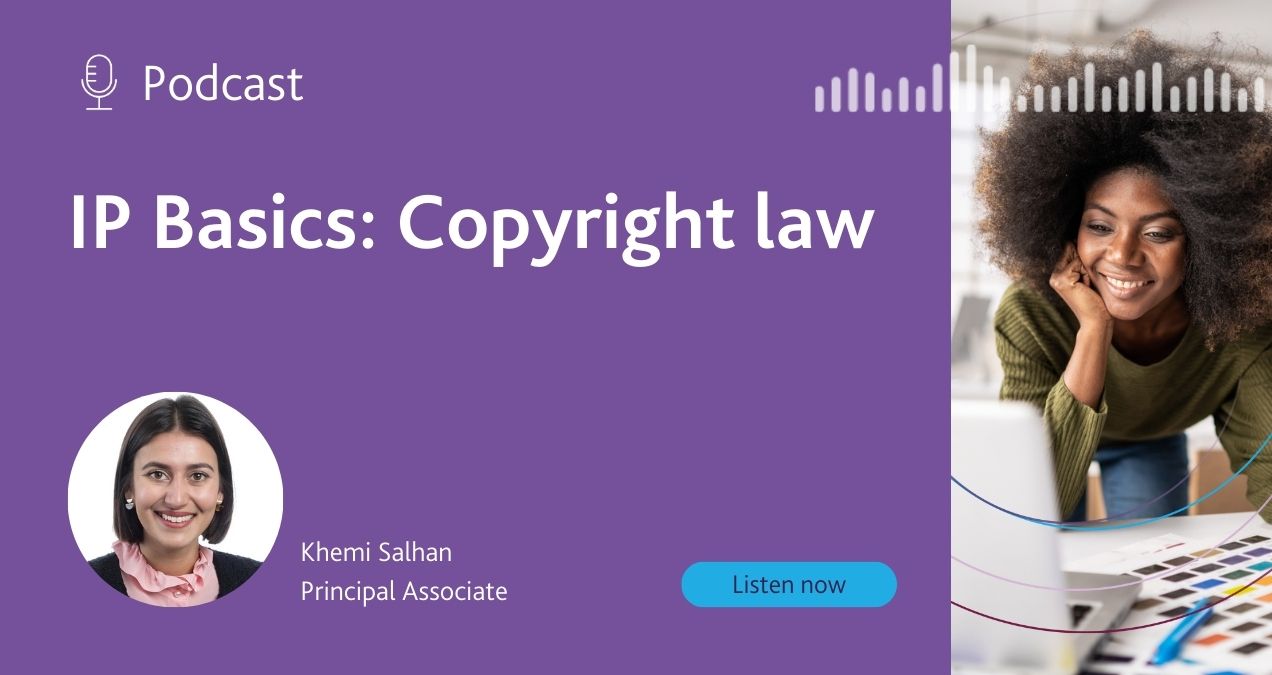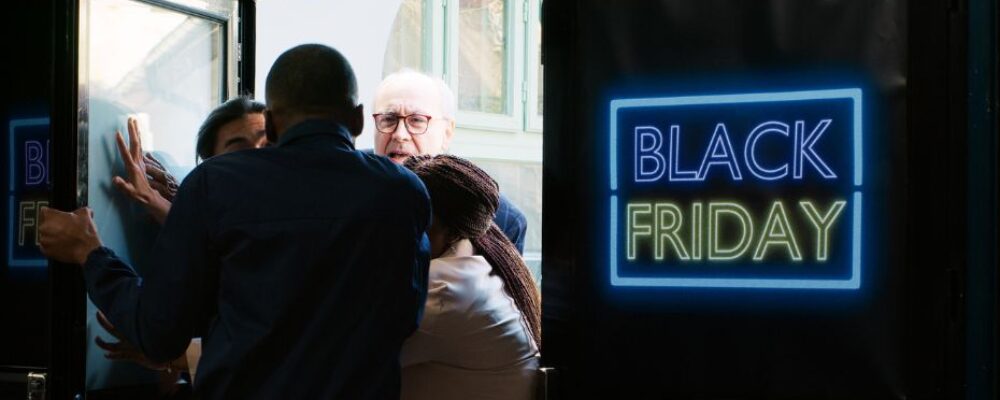Welcome to the latest episode of Gowling WLG’s global Intellectual Property podcast where we discuss a range of topics to help you protect your brands, creations and inventions.
Khemi Salhan: Welcome to this podcast on copyright law.
Lots of people have heard of copyright before but many do not know what it actually is, how it works and what protection you get. My name is Khemi Salhan and I work in the Intellectual Property team at Gowling WLG and specialise in brands, copyright and designs and advise many clients on how copyright can help them.
In this podcast, we explore the basics of copyright, explain some fundamental concepts including what copyright is, what can be protected by copyright and when something amounts to copyright infringement.
So, starting at the beginning. What is copyright? At its most basic copyright protects the expression of original works. Originality does not mean that the work must be unique. The test for originality has typically been that the work must be the author’s own intellectual creation and they must not have been copied from other works. Once an original work has been created it must then be fixed in some form in order to attract copyright protection.
Importantly, copyright law does not protect ideas. Ideas are protected by laws around confidentiality mechanisms, such as trade secrets. The two key principles of copyright are therefore; that the work must be original, and the work must be fixed in some form.
We then need to consider, “what does copyright actually protect?”. Under UK law there are a number of categories set out in the legislation recording different types of copyright works that can be protected. In particular, the list includes literary, dramatic, musical and artistic works – the so-called ‘LDMA’ works – amongst other things such as films, software, broadcast and typographical arrangements.
So looking at those LDMA works in more detail. Literary works include works such as scripts, novels, lyrics and articles. Dramatic works are works that are capable of being performed, such as works of dance or mime, but do not include any words spoken as these words are protected as literary works. Musical works protect the rhythm, harmonies and melodies of a piece and not the lyrics sung – which again are protected as literary works. Artistic works can include graphic works that are painted or drawn, photographs, sculptures and works of artistic craftsmanship.
This category of work often explains why people think of copyright when they think of creative industries such as music or the arts. However, they also protect works such as the words on a website or the images that are used in marketing brochures.
In addition, works such as computer programmes and databases can also be protected by copyright. Names, titles, short phrases and colours are generally not considered unique or substantial enough to be covered, but creations such as a logo, that combines many of these elements, may well be.
Copyright is entirely separate from the ordinary property rights that may exist in a work. For example, you could own a copy of a book but you do not own the copyright in that book. It is important to note that you can have multiple copyright protected works within a single item or product. So, for example, if you take the rather old school example of a DVD: you would have literary copyright for the screenplay and script and also the blurb on the back of the DVD; you would have musical copyright protection for each of the pieces of music on the soundtrack; you might have artistic works used on the front of the DVD packaging if it is a photograph or an illustration; and you also have copyright protection for the film itself.
Once you have established that copyright might exist, then you need to determine who owns that copyright. Copyright is generally owned by the author or the creator of the work. So if you sketch something on a piece of paper you, as the author, will own artistic copyright in that sketch.
As a general rule, work qualifies for protection if: the author was a British citizen or domiciled in the UK; in the case of a company where the company is incorporated in the UK; and also when the work was first published in the UK.
In some cases there can be more than one author and therefore potentially more than one owner of the copyright. If there are multiple authors of a work, no author or owner can do anything with the work without the consent of all the other owners.
There are also a number of exceptions to the rule that the creator of the work will be the first owner. Most importantly, employers will usually own any copyright created by their employees if it was created as part of their job, or where the creation of something outside of work would have been considered to have been created within the scope of their job role. Nevertheless, there is an important exception to this exception. A business will not automatically own the copyright of a work where the work has been created by a consultant or freelance designer. Commonly, we see agencies or consultants employed for photography, web design, development of marketing materials. In these cases, the consultant or freelance designer will likely own the copyright and the work. This is a common trap we see many businesses fall into, so please make sure that all agreements with third party non-employees who are producing materials on your business’s behalf also transfer ownership to your business of that copyright by way of assignment.
One way to think about it is, “if I saw someone using something similar to the content on my website or my marketing materials would I want the right to take action against that?”. If you do you will need to own the rights and the works or have a licence that authorises you to take such action. Some detective work may be needed to track down the author as the work may be anonymous, have a number of authors or has been created by someone unexpected. This process can be long and expensive, but it is essential for any business or individual looking to assert copyright in a work.
Once you have established who owns the copyright and when they created that work you can then determine how long copyright protection in that work lasts. In the UK, the duration of copyright protection varies but for literary, artistic, dramatic, musical works the owner of the copyright will have these rights of the author plus 70 years.
So, how do you go about proving that copyright exists? As we have explained, in order for copyright to subsist, the work must be recorded or fixed in some form. So a folk song held in the head of a busker or the great idea for a novel that has been carefully thought out but not written down will not be protected by copyright until they are fixed in some form. Whether that’s lyrics or melodies for the busker or some writing down for the novel.
Unlike some of the other intellectual property rights in the UK, copyright arises automatically on creation of a work so there is no registration process and there are no registration fees. Beware of organisations that ask you to register or pay to protect your copyright in the UK. However, please be mindful that the position on registration varies from country to country, so do look into local requirements when you are dealing outside of the UK. As there is no registration process it is important to ensure that you keep careful notes, drafts, sketches and records to evidence dates of creation and any iterations of the work.
So, once you have a work with copyright in it, what does that give you? The copyright owner has exclusive right to copy, publish, perform, show and adapt the work in the UK. It can also license that work to others, in some cases for royalty payments, and if you have licensed your copyright, licensees, whether exclusive or non-exclusive, can also sue third parties for infringement.
So, ownership of copyright gives you the right to sue for infringement, but how can you tell if your copyright has been infringed? Copyright has been infringed if someone who is not the owner copies at least a substantial part of the work. In this context, substantial is a question of quality rather than quantity. So, if someone were to copy the most recognisable or important part of another’s work this might be more likely to be a substantial part than copying larger amounts of less important parts of the work. There are specific examples and legislation for different works to what might qualify as a substantial part. It is also why you often hear in news about estates of famous musicians suing other musicians over only a few bars of music.
However, it is important to note that not all use by a third party amounts to infringement. There are several exceptions in the legislation, one of which is fair dealing – whereby using a work that is copyright protected for certain activities is permitted. Fair dealing includes things like research and private study and there are exceptions for a criticism, review, parody and news reporting.
So, what are the benefits of copyright and why should you care about it? There are a number of benefits. First, as discussed, there are no registration requirements in the UK. Copyright arises automatically and you do not need to do anything to maintain the rights that you have obtained. Compared to trade marks this is a low burden; trade marks you must use them in order to obtain them whereas copyright will just subsist.
In addition, because you do not register your copyright in the UK you do not pay any registration fees or renewal fees – it is free. Copyright also lasts much longer than other intellectual property rights. Copyright and LDMA works last for life plus 70 years, this is notably longer than patent and design rights.
And copyright is a flexible right. Although there are a number of statutory categories that set out what can be protected, these lists are broad in scope. Copyright is usually the intellectual property right that people look to rely on when dealing with new developments in a particular area. First, such as websites and the internet and now with AI.
So, what are the limits of copyright law? Copyright does not grant you a monopoly. Third parties can create works that are similar to pre-existing works, provided that the new work has not been copied from an earlier work. So, it is possible for two individuals to independently highly similar works and each individual be considered the author of the copyright protected work.
In addition, in order to prove infringement you need to show that the work has been copied. This can be a difficult thing to prove with a high threshold. You need to be able to show that the alleged infringer has had access to the work, and if the works have been kept hidden away or earlier versions were not publicly shared then authors can struggle to show that they would have been copied.
In addition, there is no protection of an idea. Copyright only protects the expression of an idea. This means that a story relating to an orphan boy who discovers he has magical powers will not necessarily infringe J K Rowling’s copyright in Harry Potter.
This concludes this podcast on the basics of copyright. Please do get in touch with the Gowling WLG Intellectual Property team if you have any queries about copyright.
Thank you very much for listening.
Thanks for joining Gowling WLG for this podcast. If you enjoyed this episode please be sure to check out our website at gowlingwlg.com for more useful insights and resources and don’t forget to subscribe to ensure you join us for your next episode.
Gowling WLG is a multinational law firm formed by the combination of Canada-based Gowlings and UK-based Wragge Lawrence Graham & Co in February 2016, in the first multinational law firm combination co-led by a Canadian firm.
Please visit the firm link to site





